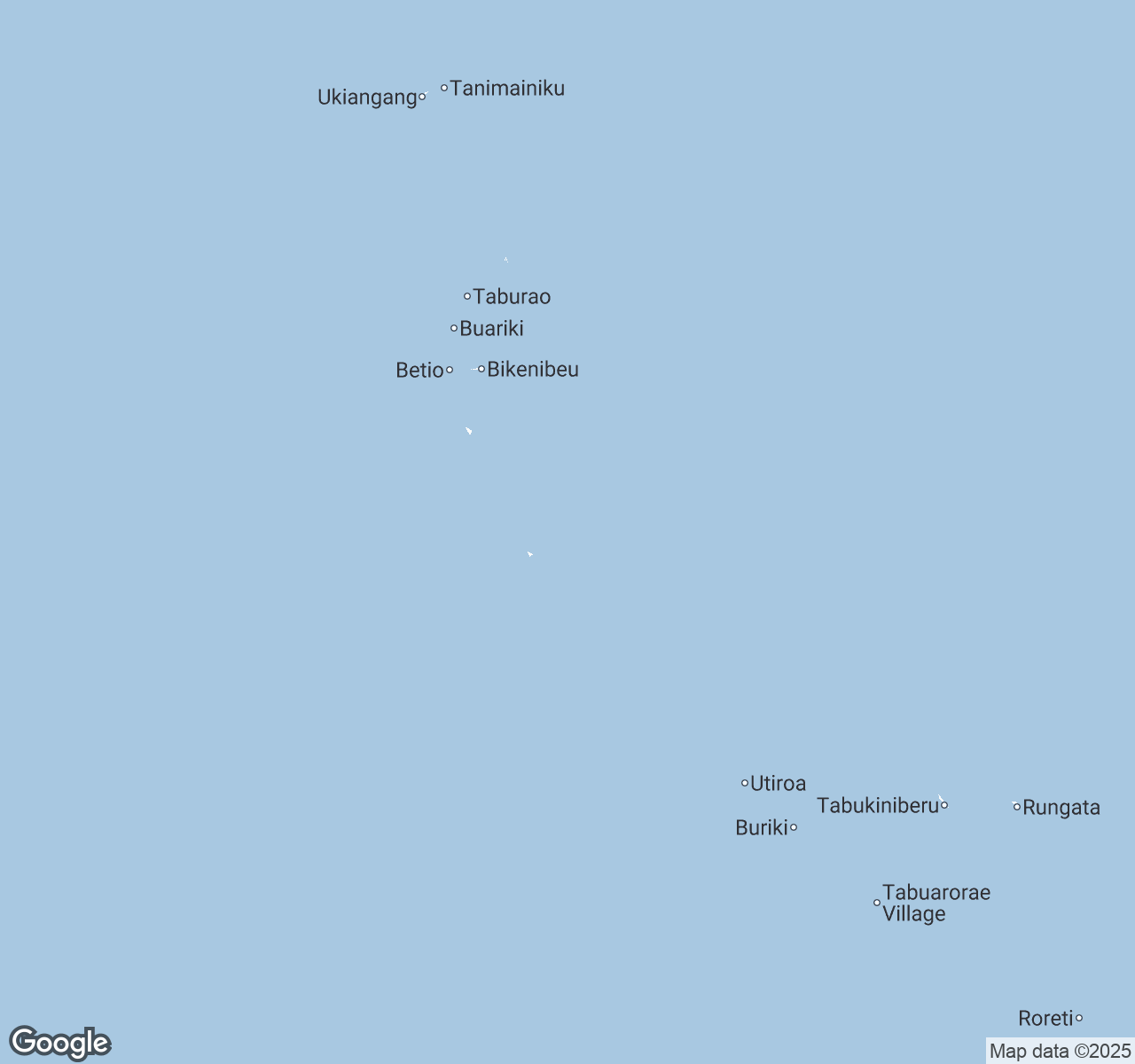
Things to Do in Kiribati
Discover the best of Kiribati
Plan Your Trip
Essential guides for timing and budgeting
Top Things to Do in Kiribati
Discover the best activities and experiences. Book now with our trusted partners and enjoy hassle-free adventures.
Your Guide to Kiribati
About Kiribati
Scattered across 3.5 million square kilometers of pristine Pacific Ocean, Kiribati exists as one of Earth's most remote and untouched great destinations. This collection of 33 coral atolls and reef islands offers an escape into a world where time moves with the gentle rhythm of ocean tides and trade winds. Here, crystalline lagoons stretch endlessly toward horizons unmarked by modern intrusion, while coconut palms sway over beaches of powdered coral sand. The I-Kiribati people welcome visitors with genuine warmth, sharing their ancient Micronesian culture through traditional dances, songs, and stories passed down through generations. Kiribati presents the rare opportunity to witness untouched marine ecosystems where manta rays glide through cathedral-like underwater caverns and countless tropical fish paint the coral gardens in brilliant hues. This is a destination for those seeking authentic connection—with nature, with indigenous culture, and with the profound peace that comes from standing at the edge of the world's largest ocean, feeling utterly removed from civilization's relentless pace.
Travel Tips
Transportation: Book flights well in advance through Fiji Airways, the primary carrier serving Tarawa. Inter-island travel requires small aircraft or boats—confirm schedules locally as weather frequently disrupts services. Rent bicycles in South Tarawa for efficient local transport.
Money: Bring sufficient Australian dollars in cash—ATMs are extremely limited and credit cards rarely accepted outside major hotels. US dollars are sometimes accepted but exchange rates are poor. Budget $100-150 daily for basic needs.
Cultural Respect: Always ask permission before photographing people or entering villages. Dress modestly, covering shoulders and knees. Remove shoes when entering homes. Participate respectfully in traditional ceremonies if invited, and avoid pointing feet toward others when seated.
Food Safety: Stick to freshly caught fish, coconut-based dishes, and fruits you can peel yourself. Avoid tap water—drink bottled or boiled water exclusively. Local seafood is generally safe when properly cooked, but avoid raw preparations unless from trusted sources.
When to Visit
Kiribati enjoys a tropical maritime climate with year-round temperatures between 26-32°C (79-90°F). The dry season (April-October) offers the most comfortable conditions with northeast trade winds providing relief from humidity, average rainfall of 100-150mm monthly, and calmer seas perfect for diving and snorkeling. This peak season sees accommodation prices increase by 30-40%, requiring advance bookings. The wet season (November-March) brings higher humidity, increased rainfall of 200-400mm monthly, and occasional tropical storms, but also 20-30% lower accommodation costs and fewer tourists. March-April and October-November offer optimal balance with pleasant weather and moderate pricing. Key cultural events include Independence Day (July 12th) featuring traditional dancing and feasting, Gospel Day (second Monday in July), and Christmas celebrations extending through January. Serious divers should visit April-June when visibility peaks at 30+ meters. Budget travelers benefit from wet season visits, while luxury seekers prefer the dry season's consistent sunshine and calm conditions. Wildlife enthusiasts should time visits with bird migration patterns—December through February offers exceptional birdwatching opportunities across the outer islands.

Kiribati location map